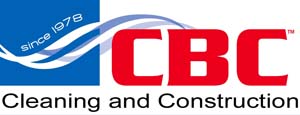Even the smallest of leaks can become a large problem given the right circumstances. Protecting your home or business from potential water damage can be as simple as enforcing good home maintenance and a few proactive measures. Running appliances only while you are home and turning the main water supply off while on vacation are two ways to avoid a long term leak. If a helpful neighbor or family member is willing to keep an eye on your home while you are gone, they can recognize if a water damage occurs early on and help avoid it becoming a much larger loss. Check appliance hoses, particularly behind washing machines, and replace steel-braided hoses with more durable rubber ones. Replacing broken tiles in showers or on the floor, which allow water to leak through, and occasional regrouting are always a good idea. All too often, water damages are the result of a burst pipe due to excessive water pressure. An inexpensive gauge can measure the water pressure in your home or business to ensure that it is between 60 and 80 PSI (pounds per square inch). Make sure to check that existing gauges are in working order and replace them when necessary.
If water damage does occur, take immediate action by shutting off the water supply, removing wet items and calling a professional. Stay out of rooms where ceilings are sagging from retained water and leave all electrical appliances turned off. Placing wood blocks or even aluminum foil under furnishings that are too large for you to move will help avoid rust and staining of the carpet. Towels can be used to soak up standing water, however, be sure not to leave them in place and remove them as soon as they are saturated. Most importantly, be aware of sentimental items and valuables. Carpets, ceilings, walls and furniture can be replaced but these items cannot.
There are some tell-tale signs that water damage is in the process of happening or has already happened. Drywall, wood flooring and other porous building materials readily absorb water. These materials will feel soft or spongy if they’ve been affected by water. Wood flooring will buckle, finishing will be ruined and vinyl flooring, among others, will bubble up. Peeling paint, drywall tape, and wallpaper are also a red flag. Be aware of changes in color, usually dark spots, on ceilings, walls, and carpeting or in some cases furniture. Drywall nails have been known to slightly pop out of drywall due to moisture and rust spots around the nails are not uncommon. In addition to these signs detectable by touch and sight, smell and sound are also keys in detecting water damage. If water has been present for long enough a musty odor may become noticeable due to developing mold growth. In ideal circumstances mold will begin to grow in as little as 72 hours. An audible sign, which is most detectable during active water damages, is the sound that water can make when running through a home or business’s walls or floors. It may sound like anything from a dripping to a rushing or even scratching sound. Some of these water damage signs are also examples of secondary damage which can occur if water damage is not addressed promptly and mitigation by a professional is delayed.
Acting quickly can minimize damage drastically and calling a professional to evaluate the loss and begin the mitigation process is the first step. Be sure to inform your emergency mitigation provider of the extent of the damage. Things like the origin of the water and if the leak has been stopped, which areas are affected, and any safety concerns will help the mitigation team be better prepared to immediately begin the dry-down process upon arrival to your home or business. Water damage, if left unattended and not properly dried, can result in mold growth and/or structural failure among other secondary damages.

